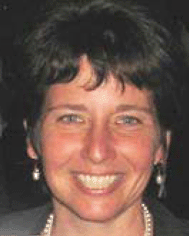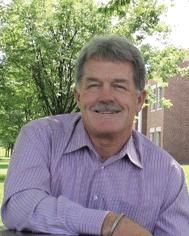Editorial Board profiles
 | ||
| Plate1 Joe Caruso | ||
His research interests have long involved atomic mass spectrometry, which led to elemental speciation studies and ultimately metallomics research. Current interests involve using atomic and molecular mass spectrometry to better understand cell toxicity from the molecular point of view contemporaneously with major cell events. His research on metals, non-metals and their differing forms has implications for chemical warfare agent detection, environmental remediation, and health care.
He has been honored by Eastern Michigan University with its 1990 Distinguished Alumni Award, by the American Chemical Society with the 1992 Cincinnati Chemist of the Year Award, the Federation of Analytical Chemistry and Spectroscopy Society with the 1994 Anachem Award, and with the 2000 Spectrochemical Analysis Award given by the Analytical Division of the American Chemical Society. Recently he received the University of Cincinnati—Excellence in Doctoral Student Mentoring Award and the UC 2007 Rieveschl Excellence in Research Award.
 | ||
| Plate2 Rachel Narehood Austin | ||
Rachel Narehood Austin is a bioinorganic chemist in the Department of Chemistry at Bates College. She joined the faculty in 1995 after completing a Ph.D. at the University of North Carolina at Chapel Hill. Her laboratory has a longstanding interest in understanding the mechanisms of metalloenzymes, especially those important in the global cycling of elements, and developing and characterizing heterogeneous catalysts that can be used for green chemistry or environmental remediation. A major emphasis of her current research is the development of a detailed picture of both the structures and mechanisms of the metalloenzymes that have evolved to catalyze the oxidation of alkanes. Funding for the lab has been received from National Science Foundation (including grants for an EPR spectrometer with low temperature capabilities, a GC-MS and GC-FID, a 400 MHz NMR, in addition to research support), NIH, the Howard Hughes Medical Institute through several institutional grants to Bates College, the Merck/AAAS research fund, Pfizer, DOE, and the Dreyfus Foundation in the form of a Henry Dreyfus Teacher Scholar Award. She is the past chair (together with co-Chair Ariel Anbar) of the Environmental Bioinorganic Chemistry Gordon Research Conference.
 | ||
| Plate3 Mary-Lou Guerinot | ||
Mary-Lou Guerinot is the Ronald and Deborah Harris Professor in the Sciences at Dartmouth College. She earned her bachelor's degree in biology at Cornell University and her Ph.D. in biology from Dalhousie University, followed by postdoctoral studies at the University of Maryland and at the DOE-MSU Plant Research Laboratory. At Dartmouth, where she rose through the ranks to full professor, she has served as chair of the Department of Biological Sciences, as Associate Dean of the Faculty for the Sciences and as Vice Provost. She has also served as a member of the Advisory Committee for Biological Sciences at the National Science Foundation, is a Past President of the American Society of Plant Biologists (ASPB) and is a fellow of the American Association for the Advancement of Science (AAAS) and ASPB. She is currently serving as Chair-Elect of Biological Sciences section of AAAS, as Chair of the Board of Trustees for ASPB, as associate editor for Plant, Cell and Environment and is a member of the editorial board for Applied and Environmental Microbiology.
Professor Guerinot is a molecular geneticist whose principal expertise and research interests are in the area of metal transport and regulation of gene expression by metals. For most of the world, plants are the major point of entry for essential metals into the food chain, so her work is laying the foundation for crops that offer sustainable solutions for malnutrition.
 | ||
| Plate4 David W. Koppenaal | ||
David W. Koppenaal is a Laboratory Fellow, Associate Division Director of Biological Sciences, and EMSL Chief Technology Officer at Pacific Northwest National Laboratory in Richland, Washington, USA. His research has focused principally on the development of atomic mass spectrometry for inorganic and isotopic characterization, and the demonstration of new analysis techniques and instruments for biological, environmental, and nuclear/non-proliferation applications. His specific expertise in plasma source mass spectrometry is recognized internationally. He has recently been involved in the application of elemental and molecular MS techniques to the characterization of bioinorganic species, helping to involve the atomic spectrometry community in the new field of metallomics. Dr. Koppenaal is a Fellow of both the Royal Society of Chemistry and the American Association for the Advancement of Science, and has previously served on the Editorial Board of the Journal of Analytical Atomic Spectrometry.
 | ||
| Plate5 Ryszard Lobinski | ||
Ryszard Lobinski is research director at the CNRS (Laboratory of Analytical Bioinorganic and Environmental Chemistry in Pau) and professor of chemistry at the Warsaw University of Technology. He obtained his PhD (1989) and DSc (habilitation) (1994) degrees from the Warsaw University of Technology, Poland. He held postdoctoral positions at the Institute of Spectroscopy and Applied Spectrometry (ISAS) in Dortmund (1990) and at the University of Antwerp (UIA) (1991–1994) before joining the National Research Council of France (CNRS) in 1994. R. Lobinski is the author or co-author of over 200 articles in international journals, 3 books, 3 edited journal issues, and about 90 invited lectures at international meetings. He received the CNRS 2006 Silver Medal and is a Fellow of the Royal Society of Chemistry. He is also the co-director of UltraTrace Analyses Aquitaine (UT2A) (a startup company at the University of Pau) and Past-President of the Analytical Chemistry Division of IUPAC. His principal research interest is the development of analytical approaches to species-specific (speciation) analysis for trace and ultratrace metals in environmental and nutrition chemistry and in life sciences.
 | ||
| Plate6 Thomas V. O’Halloran | ||
Thomas V. O’Halloran is the Morrison Professor in the Department of Chemistry and in the Department of Molecular Biosciences at Northwestern University. Professor O’Halloran received his BS and MA degrees in Chemistry from the University of Missouri, Columbia and a Ph.D. in 1985 from Columbia University, New York. Dr. O'Halloran joined the faculty of Northwestern University in 1986 after receiving an NRSA postdoctoral fellowship at MIT. Professor O’Halloran is widely known for his interdisciplinary research program, which involves chemical synthesis, analytical chemistry, biochemistry, molecular biology and cell biology. In his role of the Director of the Chemistry of Life Processes Institute, Professor O’Halloran administers and leads teams of interdisciplinary biomedical researchers. This Institute brings together researchers from the fields of chemistry, biology, physics, engineering, medicine, proteomics, nanobiotechnology, molecular therapeutics and biological molecular imaging. He also serves as the Associate Director for the Basic Sciences Research Division of the Robert H. Lurie Comprehensive Cancer Institute of Northwestern University.
His research interests focus on biological chemistry of inorganic elements and novel agents for treatment of infectious diseases and cancer. This work provided early insights into molecular regulatory mechanisms and has led to the discovery of new classes of soluble metal receptors: metalloregulatory and metallochaperone proteins. Most recently, he has discovered nanoscale processes for targeted delivery of multifunctional therapeutic agents for treatment of hematological cancer and solid tumors: these agents are moving rapidly towards clinical trials. He is the cofounder of several biotech companies and holds a number of patents.
 | ||
| Plate7 Nigel Robinson | ||
Nigel Robinson, King Edwards foundation scholar, studied life sciences at the University of Liverpool, specialising in Botany, graduating with a first in 1981 and completing a doctorate in 1984 with David Thurman on the mechanism of copper tolerance in Mimulus guttatus. Supported by Fellowships from the Natural Environment Research Council, and Directors-office of Los Alamos National Laboratory, he worked with Paul Jackson at LANL (1984–1987) then held a Royal Society University Research Fellowship at Durham University, UK (1987–1994) to gather genetic resources for metal-homeostasis. He was awarded the Presidents medal of the Society for Experimental Biology in 1993 in recognition of distinguished work on metalloproteins and metal interactions with plant and microbial cells. In 1994 he was appointed to the chair of Genetics in the Medical School at Newcastle University. He has trained two-dozen postgraduates, written circa one hundred papers, served as Editorial Advisor to Molecular Microbiology and the Biochemical Journal, organised a dozen metals-related conferences, delivered more than a hundred invited lectures and co-instigated (with Dr Dennis Winge of the University of Utah) the Gordon Research Conference series on the Cell Biology of Metals. With nearly a half of enzymes estimated to need metals he has contributed to understanding how cells assist proteins to acquire the correct metals.
 | ||
| Plate8 David E. Salt | ||
David E. Salt is a Professor at Purdue University in the Department of Horticulture and Landscape Architecture, West Lafayette, Indiana, USA. His long term research interest is to understand the function of the genes and gene networks that regulate the plant ionome (elemental composition), along with the evolutionary forces that shape this regulation. To achieve this his research group couples high-throughput elemental profiling, with bioinformatics, genomics and genetics, in both genetic model species (yeast, Arabidopsis and rice) and “wild” plants (Astragalus, Thlaspi and Pteris). He has been involved in such work since his PhD (Liverpool University, UK, 1985–1988) working on the mechanisms of copper tolerance in Mimulus gutattus (yellow monkey flower). He also has a BSc in Biochemistry (University of North Wales, Bangor, UK, 1981–1984) and an MSc in Computer Science (Hallam University, UK, 1984–1985). He has published over 75 peer reviewed papers since 1989 with approximately 4000 citations. During his career, he has won competitive research funding from USDA, DOE, NSF and NIH. He is a member of the American Society of Plant Biologists and has sat on both the Education and Public Affairs committees. He is also a Monitoring Editor for Plant Physiology, and on the Editorial Boards of the Brazilian Journal of Plant Physiology, BMC Plant Biology and the International Journal of Phytoremediation.
 | ||
| Plate9 Bibudhendra (Amu) Sarkar | ||
Bibudhendra (Amu) Sarkar is a leading authority in Inorganic Biochemistry. He graduated with a PhD degree in Biochemistry from the University of Southern California, Los Angeles in 1964. He joined the Department of Biochemistry, University of Toronto and Research Institute of the Hospital for Sick Children with a Medical Research Council Scholar award. He was a Visiting Scientist in the Institute de Biologie Physico-Chimique, Université de Paris-Sorbonne, France where he worked on the ab initio molecular orbital calculations of metal-binding sites of proteins. He was a Visiting Scholar working on protein structure in the Department of Biochemistry, University of Cambridge, UK with an award from the Nuffield Foundation. As the Head of Structural Biology and Biochemistry Department in the Hospital, he established a major research centre with a broad initiative in protein structure and function. He discovered the copper–histidine treatment of Menkes’ disease, a devastating neurodegenerative disease in children caused by genetic defect of copper transport. His pioneering research on the structure and function of metal-binding proteins led to the discovery of ATCUN motif, which can serve as a probe for protein structure determination by paramagnetic relaxation enhancement NMR spectroscopy and selective cleavage of DNA. His major research interests are in the area of metal-related genetic diseases with a special emphasis on Wilson’s and Menkes’ diseases and studying the effects of toxic metals in the environment and its impact on human health. Dr Sarkar is a Professor Emeritus in the University of Toronto and the Hospital for Sick Children, Toronto.
 | ||
| Plate10 Hongzhe Sun | ||
Hongzhe Sun obtained his PhD from the University of London (with Peter J. Sadler) in 1996. After postdoctoral work at the University of Edinburgh, he joined the Department of Chemistry at the University of Hong Kong in 1998 where he is currently a professor. He is the recipient of the NSFC Outstanding Young Scholar Award in 2005, and serves on the Advisory Board of the Journal of Biological Inorganic Chemistry. His research interests are centered at metallodrugs and metalloproteins, inorganic structural biology and metallomics.
| This journal is © The Royal Society of Chemistry 2011 |
